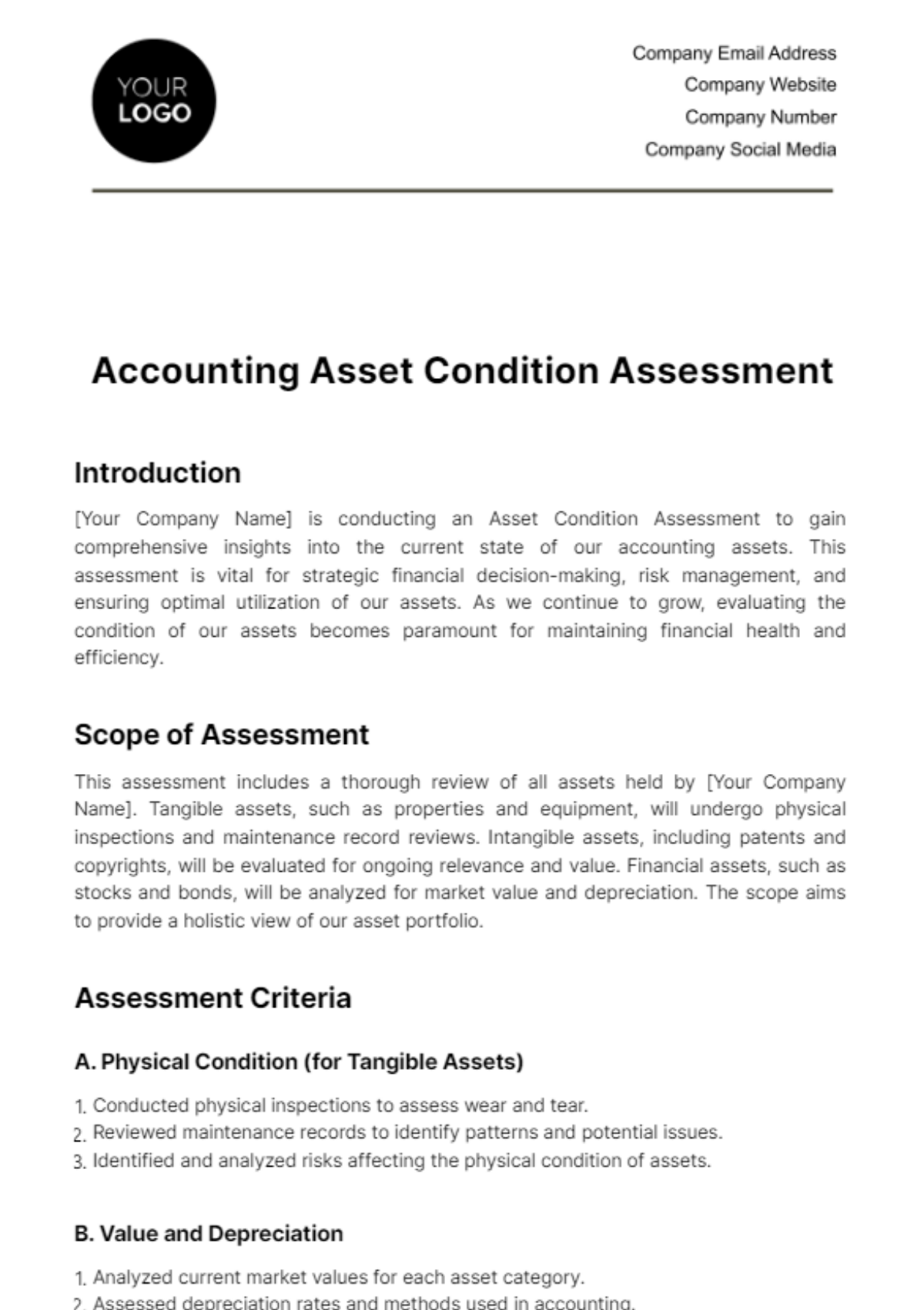Accounting Asset Condition Assessment
Introduction
[Your Company Name] is conducting an Asset Condition Assessment to gain comprehensive insights into the current state of our accounting assets. This assessment is vital for strategic financial decision-making, risk management, and ensuring optimal utilization of our assets. As we continue to grow, evaluating the condition of our assets becomes paramount for maintaining financial health and efficiency.
Scope of Assessment
This assessment includes a thorough review of all assets held by [Your Company Name]. Tangible assets, such as properties and equipment, will undergo physical inspections and maintenance record reviews. Intangible assets, including patents and copyrights, will be evaluated for ongoing relevance and value. Financial assets, such as stocks and bonds, will be analyzed for market value and depreciation. The scope aims to provide a holistic view of our asset portfolio.
Assessment Criteria
A. Physical Condition (for Tangible Assets)
Conducted physical inspections to assess wear and tear.
Reviewed maintenance records to identify patterns and potential issues.
Identified and analyzed risks affecting the physical condition of assets.
B. Value and Depreciation
Analyzed current market values for each asset category.
Assessed depreciation rates and methods used in accounting.
Calculated the net book value of each asset based on the depreciation.
C. Compliance and Legal Aspects
Verified compliance with accounting standards and regulations.
Examined legal documents related to asset ownership for accuracy and completeness.
Identified and assessed any legal risks associated with the ownership and use of assets.
D. Intangible Asset Assessment
Evaluated the current market value of intangible assets.
Reviewed amortization schedules for accuracy.
Assessed the ongoing relevance and value of intangible assets to the organization.
Data Collection
A. Collected Data Points
To conduct a thorough assessment, the following data was collected:
Comprehensive asset register and inventory lists.
Detailed maintenance records for each tangible asset.
Recent financial statements and reports.
Legal documentation related to the ownership and management of assets.
Reporting
A. Structure and Content of the Report
The assessment findings are documented in a comprehensive report that includes:
Executive summary highlighting key findings and recommendations.
Detailed analysis of each asset category, covering physical condition, value, compliance, and intangible assets.
Recommendations for strategic asset management and improvement.
Contact Information
For any inquiries or additional information, please contact:
[Your Name]
[Your Company Email]
[Your Company Number]
Accounting Templates @Template.net






























